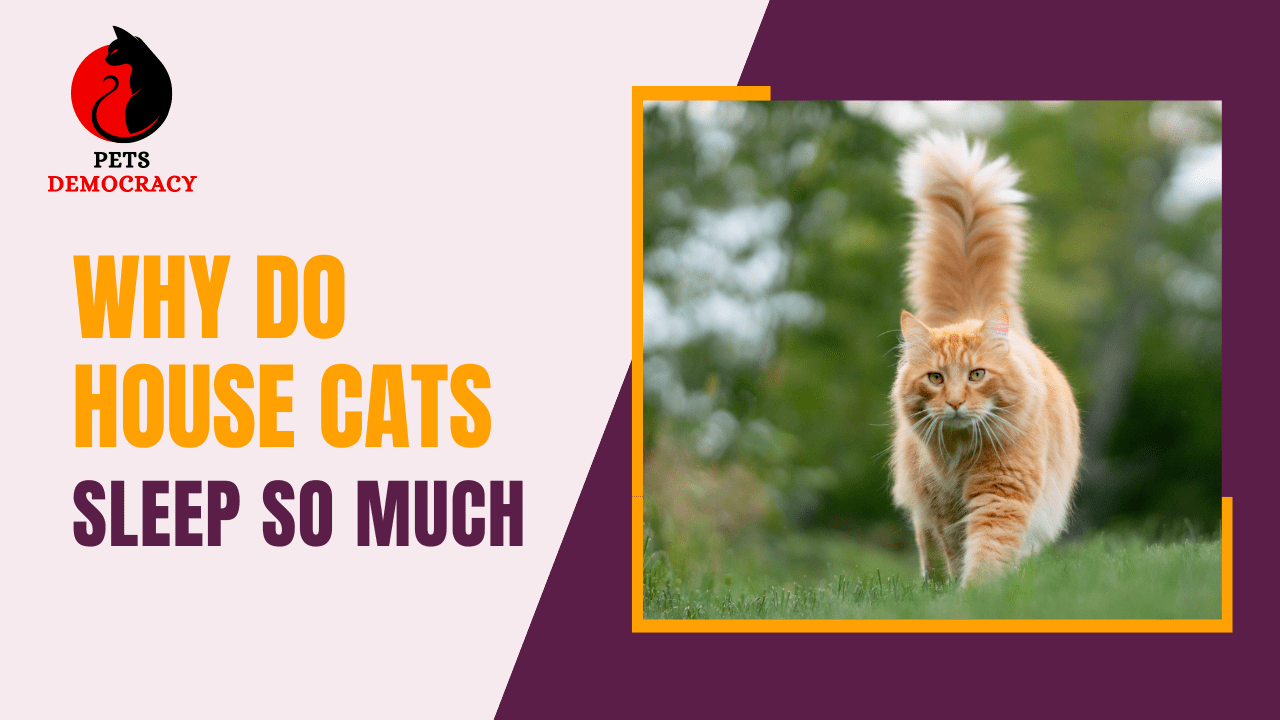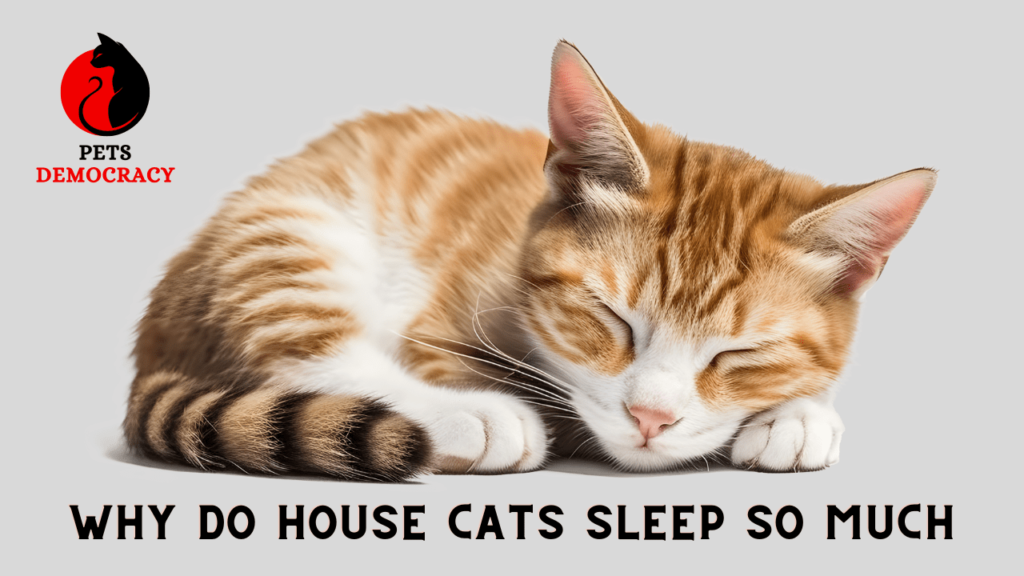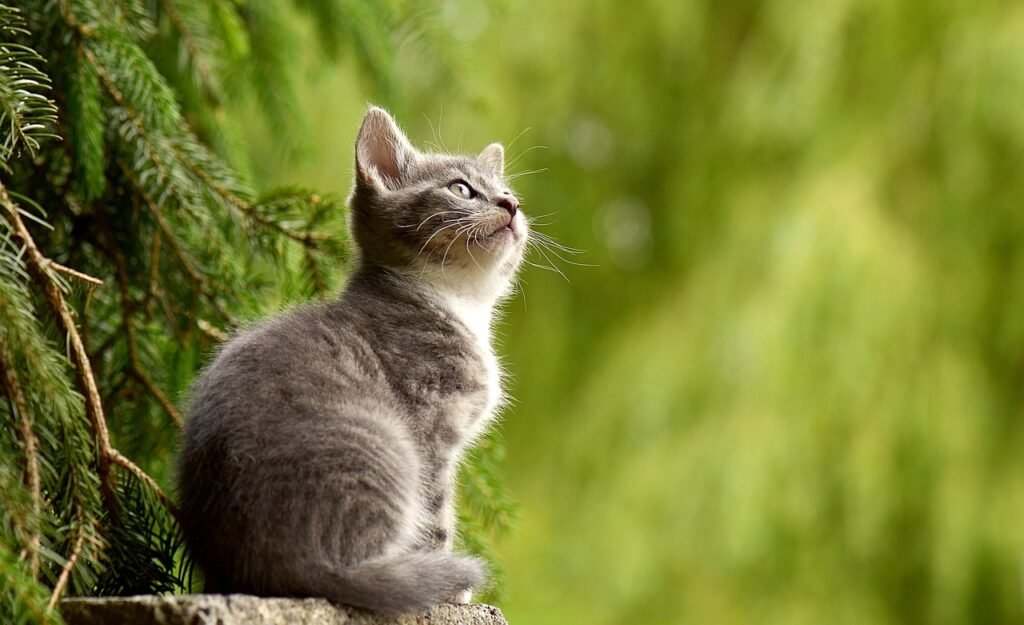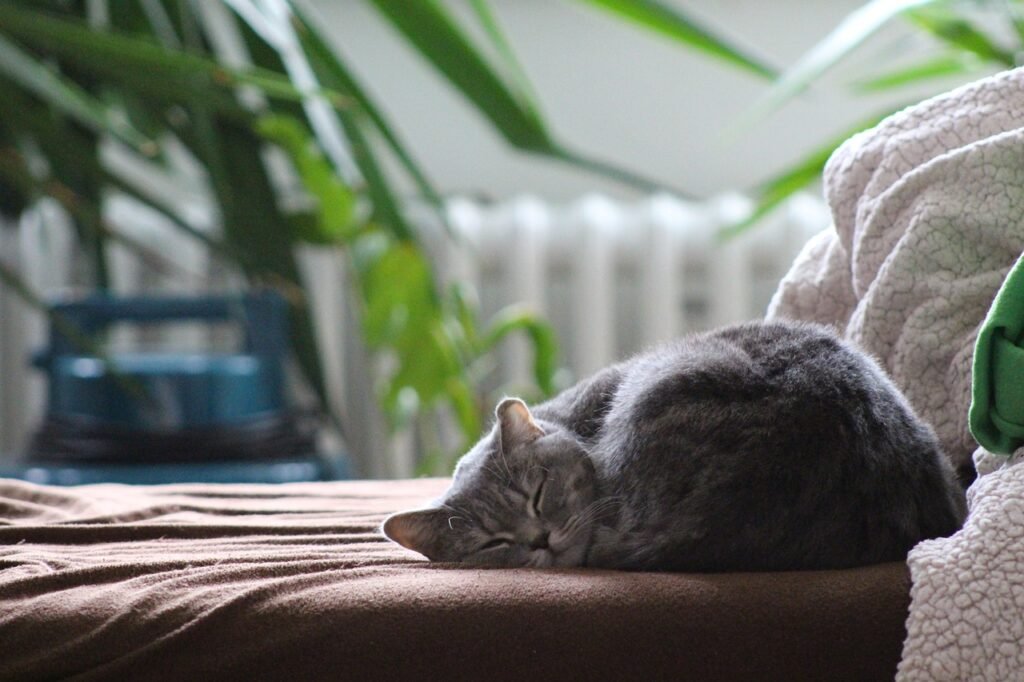
In this exploration, we delve into the world of feline sleep, unraveling the mysteries behind why house cats sleep so much.
Cats have long been admired for their mysterious and enigmatic behavior, and one aspect that never fails to intrigue cat owners is their seemingly boundless ability to sleep.
While the average cat can sleep anywhere from 12 to 16 hours a day, many feline aficionados find themselves pondering the reasons behind this propensity for extended slumber.
Why Do House Cats Sleep So Much?

Cats, both domesticated and wild, are renowned for their predilection for sleep. Understanding the evolutionary roots of this behavior provides crucial insights. House cats, descendants of wildcats, share a common ancestry with their more ferocious relatives.
In the wild, wildcats utilize their energy bursts for hunting and securing prey. Domestication may have softened the edges of their predatory instincts, but the genetic legacy remains intact. Consequently, house cats conserve energy through extended periods of rest, awaiting the opportune moment to unleash their dormant predatory prowess.
Apart from their evolutionary history, the physiology of cats also contributes to their extended nap sessions. Due to their crepuscular nature, cats are most active during dawn and twilight.
In between these periods, they often retreat to the comfort of their favorite napping spot. Understanding these natural inclinations helps cat owners appreciate that a cat’s sleep-wake cycle might differ significantly from our own.
Suggested Read: Fat Cats Surprise
The Natural Sleep Patterns of Cats

To comprehend the sleeping habits of house cats, it’s essential to delve into their natural sleep patterns, Cats experience two main phases of sleep: Rapid Eye Movement (REM) sleep and non-REM sleep.
While humans typically enter REM sleep after around 90 minutes of non-REM sleep, cats can transition into REM sleep within 30 minutes, facilitating more frequent but shorter naps.
These short, intermittent naps serve various purposes. Cats use them to stay alert to potential threats, conserve energy, and maintain their agility. Understanding the Cats Sleep So Much cycle sheds light on the necessity of their numerous naps throughout the day.
Common Factors Affecting Cats’ Sleep

Several factors can influence a cat’s sleep patterns, both positively and negatively. Environmental factors, such as the availability of a quiet and comfortable space, play a pivotal role in promoting restful sleep. Cats are sensitive to disturbances, and a serene environment ensures they can indulge in their much-needed rest without disruptions.
Physical and mental health also impact a Cats Sleep So Much. Illness, pain, or stress can disrupt their sleep patterns, leading to increased or decreased sleep. Cat owners must monitor their feline companions for any signs of discomfort or distress that may affect their sleep.
Suggested Read: Best Cat Biscuits in the USA
FAQs For Why Do House Cats Sleep So Much
Why do house cats sleep so much?
House cats sleep extensively due to their evolutionary background as descendants of wildcats. Their genetic predisposition for conserving energy, coupled with a crepuscular nature, results in prolonged periods of rest between bursts of activity.
What are the natural sleep patterns of cats?
Cats experience two main phases of sleep: Rapid Eye Movement (REM) and non-REM sleep. Their ability to enter REM sleep within 30 minutes allows for frequent but shorter naps, aligning with their crepuscular behavior and serving various purposes like staying alert and conserving energy.
How does the environment affect a cat’s sleep?
A serene and comfortable environment is crucial for promoting restful sleep in cats. Disturbances, loud noises, or an uncomfortable sleeping space can impact their ability to nap peacefully, emphasizing the importance of providing a quiet and cozy setting.
What factors can disrupt a cat’s sleep?
Physical and mental health play significant roles in a cat’s sleep patterns. Illness, pain, or stress can disrupt their rest, leading to either increased or decreased sleep. Regular monitoring for signs of discomfort is essential for maintaining a cat’s overall well-being.
How can cat owners support their feline companions’ sleep needs?
Cat owners can support their cats’ sleep needs by creating a comfortable and quiet sleeping environment, monitoring for signs of health issues, and respecting the cat’s natural sleep-wake cycle. Understanding and accommodating these factors contribute to a harmonious relationship with our feline friends.
Conclusion
In conclusion, the prolific sleep habits of house cats can be attributed to a combination of evolutionary instincts, natural sleep patterns, and environmental factors.
Understanding and respecting these aspects of feline behavior is essential for fostering a healthy and harmonious relationship between cats and their human companions.
By providing a conducive environment and being attuned to their needs, cat owners can ensure their furry friends enjoy the restful slumber they need to lead happy and fulfilling lives.
Suggested Read: Can Cats Eat Bananas?



Pingback: Purrfect Love Does a Cat Loves You? || 2024 - Pets Democracy